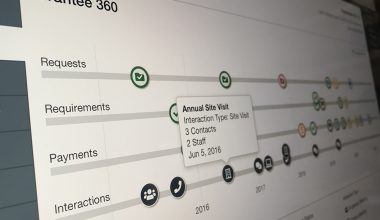One of the most important concerns that local governments face is housing policy, especially for low-income earners. Hence, they have provided affordable housing programs to ensure that both the disabled and low-income earners are able to rent a nice place to live. We’ll look at these low-income housing programs in this chapter, including the no-waiting list options.
What is Low-Income Housing?
There is a severe lack of affordable housing in many areas. The National Low Income Housing Coalition provides an annual report that shows the “housing wage” that a person would need to earn full-time (40 hours per week, 52 weeks per year) in order to rent a two-bedroom unit under the official government standard.
This housing wage is higher than the average wage for low-income workers. In addition, in some places, such as California, the housing wage is extremely high. This problem is exacerbated by the fact that, on average, the least affordable areas are also the wealthiest. This implies that a lack of low-income housing can keep individuals out of decent work prospects.
Policymakers have a number of tools at their disposal to address affordability concerns, including rent control, inclusionary zoning ordinances, and targeted subsidies, but economists generally agree that the only comprehensive way to lower prices is to increase the supply of houses, typically by changing zoning rules to make them more favorable to new construction.
What Does the Government Consider to be Affordable Housing?
The federal Department of Housing and Urban Development (HUD) defines “low-income housing” as one that can be obtained for 30% or less of a household’s income. However, this differs per city.
For example, a household is termed “low-income” if it earns less than 80% of the local median income (this is called Area Median Income, or AMI). According to this definition, a home is “affordable” for low-income families if it costs less than 24% of the region’s median income.
These specific thresholds are obviously arbitrary. In the real world, spending 31% of your income on housing is not significantly more burdensome than spending 29%, and various families face quite different challenges in terms of child care, health care, and other essentials. However, that is the official definition.
What’s the problem with the government’s concept of affordable housing?
One issue is that many families try to save housing costs by relocating further away from job centers. However, this just raises their commuting costs, implying that a simple “cheap housing” metric may not capture the entire picture. The Center for Neighborhood Technology provides a more comprehensive H+T Affordability Index that takes into account both housing and commuting costs.
Another issue is that the concept of area median income (AMI) may inflate housing affordability in high-income areas. The median income in the Washington, DC, metropolitan region, for example, is $107,500. This means that a family of three earning $48,375 is deemed “low income” for housing affordability purposes. This also means that a unit may be reasonable for a low-income family while still being substantially out of reach for a family living near the poverty line.
The presence of many high-income households in the DC area does not make mid-priced properties affordable to the city’s actual low-income people. AMI assumes that by basing affordability measurements on the local median income, your city has actually boosted the affordability of its housing supply when housing affordability becomes so bad that lower-income individuals leave. This is a significant misconception because the highest-income metro regions in America are frequently the least inexpensive.
What Steps Can We Take to Make Housing More Affordable?
There are two fundamental sorts of policy that could significantly impact housing affordability:
First, the government might directly provide low-income families with money or reduced housing. A family that obtains a free house can clearly afford to live there. Similarly, families with greater money can afford a wider selection of housing options.
Second, officials may decide to increase the number of houses in a particular metropolitan region. This could be accomplished by loosening constraints on the size of buildings that can be constructed or by loosening restrictions on the minimum size of individual residential units. Cities frequently have zoning restrictions that unfairly limit the availability of housing.
Rent control and inclusionary zoning laws are frequently advocated by governments and political groups to address housing affordability issues. However, these technologies simply redistribute a finite supply of housing. They do not increase the number of individuals who can afford to live in a specific location.
Why is expanding supply so important to affordability?
Any solution to housing affordability that ignores supply will eventually run into a dilemma like the children’s game Musical Chairs: if there aren’t enough homes to go around, someone has to lose out.
People with the least amount of money to spend will suffer the most in an unregulated, unsubsidized market. Various regulatory initiatives or subsidies have the potential to change this and provide targeted support to specific households. However, in many regions, the fundamental issue is that there is a great demand for homes. Many people want to reside in Palo Alto because of the technology boom, but there aren’t enough houses to go around. Because of the resurgence of urban life, many individuals want to live in Manhattan. Still, there aren’t enough flats to go around. The housing supply must expand in order for housing to become more affordable.
What Is Zoning?
The term “zoning” is frequently used in a wide sense to refer to a collection of regulations that control the use of urban and suburban land. It is more specifically used to refer to what is sometimes known as “Euclidean zoning” (after the Ohio village of Euclid, not the Greek mathematician), which aims to separate different types of building uses from one another.
A specific plot of land is zoned for residential use, office buildings, shopping complexes, or anything else it may be. There are also “form-based” zoning laws, which govern the shape of buildings rather than the activities that occur within them. A Euclidean or form-based zoning law will typically distinguish between regions where multi-family apartment complexes are permitted and areas where they are prohibited.
Other types of laws may or may not be considered zoning by specific governments. For example, it is usual to require specified minimum amounts of parking to be incorporated with new construction projects, a restriction that frequently de facto limits the amount of density that is permissible. Jurisdictions may also have restrictions about “lot occupancy” (the amount of space that must be left unbuilt and reserved for yards) or the minimum lot size. All of these laws have the potential to limit the supply of homes in a given location. If buildings must be built on larger lots by law, fewer residences can be erected in a given region.
What Effect Does Rent Regulation Have on Housing Affordability?
At first glance, a “rent control” rule that limits the amount of rent a landlord may charge appears to make homes more affordable. However, economists frequently teach in Econ 101 that this is incorrect. Rent control laws, according to the argument, make housing less affordable by making it less profitable to build new apartments.
In theory, the Econ 101 argument is plausible, but it is unlikely to be a substantial factor in contemporary America. In the markets with the most severe affordability issues, it is usually zoning rather than rent regulation that limits home supply. Massachusetts, for example, abolished rent control fully in 1994. Despite growing home costs, this hasn’t resulted in a boom of high-rise buildings near Harvard Square for the simple reason that high-rise construction violates zoning regulations.
Low Income Housing Programs for People with Disabilities
Finding cheap housing to rent is always tough, but it is especially difficult for low-income people with disabilities—homelessness is a serious possibility when adequate, affordable housing is difficult to find. According to data from the Annual Homeless Assessment Report, about half a million single people and heads of households who visited homeless shelters over the course of a year reported having a disability.
The United States Department of Housing and Urban Development (HUD) and Health and Human Services (HHS) fund housing services for families and individuals in this situation. There are other programs at the state, county, and local levels.
Points To Note
Low-income housing options for the disabled are available through state public housing authorities’ housing assistance voucher programs.
Various voucher systems target distinct demographics based on certain criteria; eligibility restrictions vary per program.
Finding and applying for the correct HUD or other federal programs can be difficult; waiting lists are lengthy and may close if demand exceeds supply.
Many states operate their own housing assistance programs in addition to those provided by federal agencies, so individuals and families should look into local options as well.
An Overview of Low-Income Housing Programs
HUD and HHS provide funding to state, county, and local governments to manage the various programs. Applicants apply for assistance through their local public housing authority (PHA).
HUD housing voucher programs are the major source of help for low-income households with disabled family members nationwide. The awards are managed by state and local PHAs and have the same eligibility requirements in terms of income level and quantity of financial assistance granted. The demand for vouchers and other forms of housing assistance far outstrips the available funds. The procedure can take many years.
Programs for HUD Vouchers
All HUD voucher housing programs are primarily aimed at households with extremely low income, defined as incomes below the poverty level or 30% of the local median, whichever is higher. A family with a voucher must typically pay 30% of their income for rent and utilities; the voucher pays the remainder, up to a set amount, with percentages and restrictions fluctuating according to local market housing costs. As a reasonable accommodation for a person with a disability, housing organizations may impose a higher payment criterion.
In actuality, the local PHA can change income and eligibility restrictions to match local conditions. The PHAs in charge of administering the voucher program will prioritize the most vulnerable families, such as homeless families, families living in inadequate housing, or families whose income is so low that they are paying more than half of their income on rent.
The main housing subsidy scheme is the housing choice voucher (HCV) program. This program alone benefits almost 5 million people and 2.3 million households across the country. Its mission is to help “extremely low-income families, the elderly, and the disabled afford good, safe, and hygienic private-market housing.” There is no requirement for a disabled person to live in the home to qualify for HCV. However, having a disabled person in the household is taken into account when considering their application.
Low Income Housing With No Waiting List
The need for low-income housing continues to climb as rents rise, despite the fact that no state or county allows a tenant earning minimum wage to afford a two-bedroom apartment. How can you discover a house with no waiting list when demand for low-income housing is increasing, and supply is decreasing? First of all,
Does Low-Income Housing With No Waiting List Exist?
Because of the increased demand for low-income housing, there are few options available without waiting lists.
Don’t let this deter you from getting the housing you require! Those three-plus-year wait lists may be shorter than you think. They only consider how many households have applied for low-income housing and how many apartments are available. For example, if 300 households apply for low-income housing and only 100 units are available, the office will state that the waiting list is three years long.
That three-plus-year waiting list does not account for how people’s circumstances may change. Some of the households on that waiting list will relocate to a different city, begin receiving disability benefits, earn more than the income limit, or otherwise find themselves in a situation where they can no longer qualify for this housing. That means your projected waitlist time will reduce, and you may be able to move into your new home sooner.
What Is The Highest Income For Section 8?
The highest income for section 8 is a total of $117,400 for a family of four.
How Do I Qualify For Low-Income Apartments In California?
You must be a United States citizen or a legal immigrant, and your income must be below 80% of the median income in your area.
How Much Is Low Income In LA?
In 2021, the low income for an individual was $66,250, and $85,150 for a family of three in LA.
What Is A Good Household Income?
A good household income lies between $51,200 to $153,000.
What Is The New Poverty Line?
Using 2017 values, the new global poverty line is set at $2.15. This means that anyone earning less than $2.15 per day is extremely poor.
How do you qualify for affordable housing?
Most state and federal housing assistance programs require applicants to have incomes that are at or below 80% of the county’s median family income (MFI) in order to qualify.
How much is deposit for affordable housing?
The government will lend you up to 40% of the cost of your brand-new London home. As such, you’ll need a 5 percent down payment plus a mortgage for the remaining 55 percent.
What is the most Section 8 will pay?
The proposed normative sum will be somewhere in the range of 90% and 110 % of FMQ. As a result, the amount of money that landlords receive from Section 8 depends on the following three factors: That amount is determined by the metropolitan area in which your property is situated as the Fair Market Rent.
Who qualifies for housing assistance in Ohio?
You will also be given preference if you or a family member are either homeless, disabled, elderly, or veterans of the armed forces. The HUD and local MHAs will manage your public housing while you participate in this program. When you apply for Ohio Section 8, your monthly housing cost is capped at a set amount.
Who is eligible for Help to Buy?
You need to be at least 18 years old. You must be a “first-time buyer,” someone who has never owned a home in the United Kingdom or anywhere else in the world. To qualify for the program as a first-time buyer couple/family/friend, you must both be first-time buyers.
How long does the rental process take?
First-time tenants should anticipate a three-week delay in moving in if all paperwork is not properly completed. When renting for the first time, following the rules typically adds about a week to the time it takes before a tenant can move in.
In Conclusion,
Living on a low income affects around 37.2 million Americans. While the definition of low income varies depending on who you ask and where you live, the Federal Poverty Level (FPL) criteria might assist you in establishing if you are a low-income earner.
Low-income earners confront a variety of difficulties. However, with the guide in this article, you can ensure that your family’s fundamental necessities, such as health care, housing, nutrition, transportation, and education, are met.
Low-Income Housing FAQs
What is the most section 8 will pay?
The funds cover a portion or all of the rent for the voucher bearer. Each household will spend between 30% and 40% of its income on rent on average.
How do I qualify for section 8 housing?
To qualify for section 8 housing, you must be at least 18 years old, a U.S. citizen or qualified noncitizen, and have a household income that is less than 50% of the region’s median income.
What is considered low income for a person in Texas?
A person who earns a yearly salary of $10,830 or less in Texas is considered to be living on a low income.
Related Articles
- How To Buy Land: Step-by-step Guide
- HOUSING RATIO: How to Calculate Housing Ratio with Ease (+ Free Tools)
- Need a New Commercial Vehicle? 8 Reasons Why Renting Is A Viable Option
- HOUSING EXPENSE RATIO: What It & How To Calculate it
- How to Get a Business License: Step-by-Step procedure including Cost of Application






